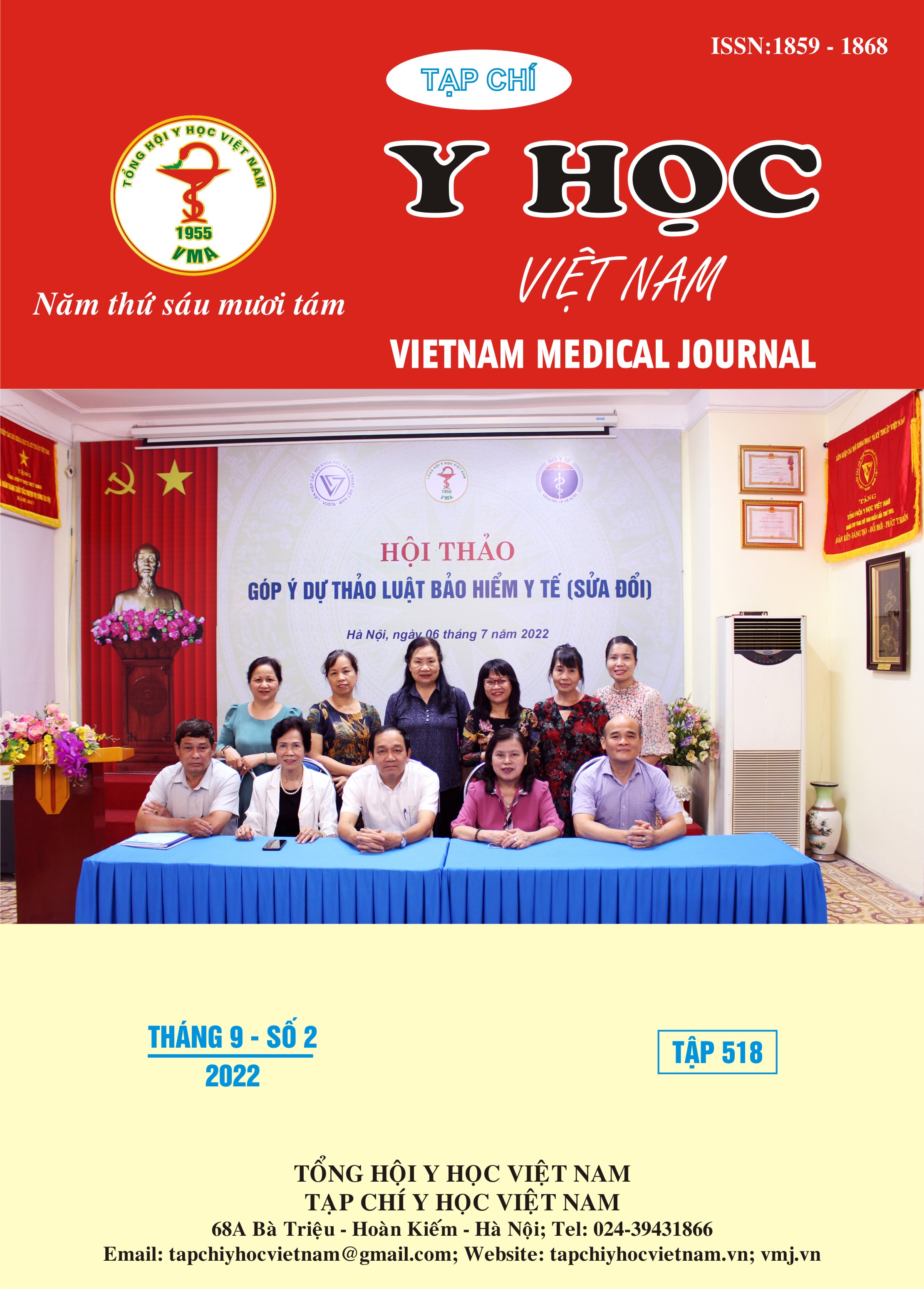STUDY ON CLINICAL, PARACLINICAL CHARACTERISTICS AND RESULTS OF NON- OPERATIVE MANAGEMENT OF SPLENIC RUPTURE IN BLUNT ABDOMINAL TRAUMA AT CAN THO CENTRAL GENERAL HOSPITAL IN 2021- 2022
Main Article Content
Abstract
Background: The spleen is the most frequently ruptured organ in blunt abdominal trauma. Spleen rupture causes intra-abdominal bleeding, if not diagnosed and treated promptly leads to death, the treatment of splenic rupture due to blunt abdominal trauma has helped doctors pay more and more attention to preserving the spleen. do not operate in hemodynamically stable patients. However, at Can Tho Central General Hospital, which is a large surgical facility receiving treatment for many patients in the Western provinces, there is still no comprehensive study to evaluate the application results. Spleen-conserving treatment without surgery in patients. Objectives: describe the clinical and subclinical characteristics of patients with ruptured spleen in blunt abdominal trauma at Can Tho Central General Hospital. Subjects and research methods: all patients with splenic injury alone or in combination with intra-abdominal injuries were diagnosed and indicated for non-operative treatment in the first 24 hours at Can Tho Central General Hospital. Results: the success rate of medical treatment 41/42 accounted for 97.6%, of which patients aged 21-55 accounted for the majority 73.8% and the youngest age 16 accounted for 1.5%, the oldest age 84 accounts for 1.5%. Average age 30.75 ± 15.51; there were 33 male patients, accounting for 78.6% and 21.4% female patients; Traffic accident is the most common cause with 32/42 patients, accounting for 76.2%; Most of the patients admitted to the hospital had systolic blood pressure > 90 mmHg, accounting for 90.5%; Patients with splenic abdominal pain accounted for the majority with 71.4%; 31 patients, accounting for 73.8%, had no abdominal wall damage. The proportion of patients without abdominal distension accounted for 88.1%. Most patients had signs of abdominal wall with 73.8%; testing, the proportion of patients without anemia accounted for the most with 47.6%; Ultrasound: The amount of free intra-abdominal fluid with the least amount of normal accounted for the most with 53.7%; Grade II and III splenic injury accounted for the majority of the study with the rate: 31% and 50%, respectively. Conclusion: Through our study of 42 patients with splenic injury who were assigned conservative treatment without surgery, we concluded that the success rate of medical treatment was 41/42, accounting for 97.6%. Patients with splenic injury below grade IV, hemodynamically stable, have a high rate of conservative treatment.
Article Details
Keywords
spleen injury
References
2. Trần Ngọc Dũng (2019), Nghiên cứu điều trị không mổ vỡ lách trong chấn thương bụng kín tại bệnh viện hữu nghị Việt Đức. Đại học Y Hà Nội.
3. Trần Bình Giang (2001), Nghiên cứu phẫu thuật bảo tồn vỡ lách do chấn thương tại Bv Việt Đức.
4. Fransvea, P., Costa, G., Massa, G., Frezza, B., Mercantini, P. & BaIducci, G. (2019), Non-operative management of blunt splenic injury: is it really so extensively feasible? a critical appraisal of a single-center experience. Pan Afr Med J, 32, p. 52.
5. Martin, J. G., Shah, J., Robinson, C. & Dariushnia, S. (2017), Evaluation and Management of Blunt Solid Organ Trauma. Tech Vasc Interv Radiol, 20(4), pp. 230-236.
6. Godley C. D., Warren R. L., Sheridan R.L. et al (1996). Nonoperative management of blunt splenic injury in adults: age over 55 years as a powerful indicator for failure. Journal of the American College of Surgeons, 183(2), 133-139.
7. Powell, M., Courcoulas, A., et al. (1997). Management of blunt splenic trauma: significant differences between adults and children. Surgery, 122(4), pp. 654-660.


